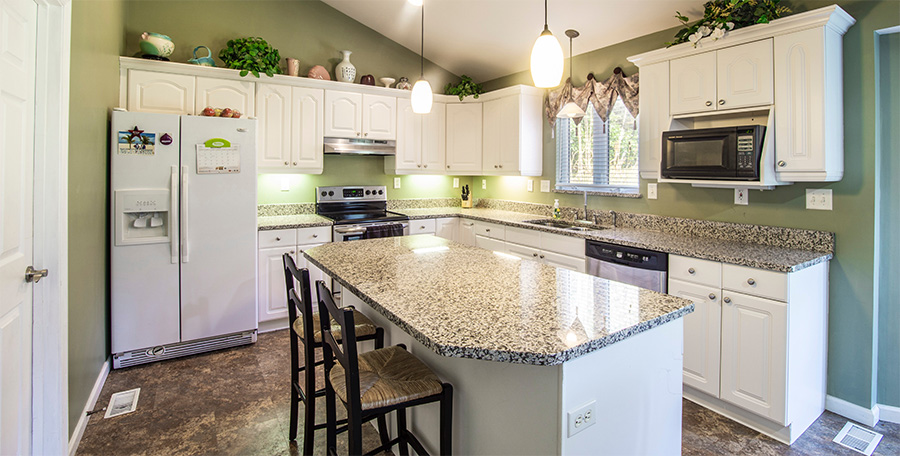
Guidelines for Supporting Countertops
Installing countertops requires a number of specific guidelines if your goal is to provide a high quality product with an impeccible installation. In fact, everything from the polishing process to the profiling and even the way the countertop is supported can come into play. In this article we will take a look at why countertop support is important. Additionally, we will consider how much overhang can exist without being supported. As you will see, the answer is not so simple.
Why Countertop Support Is Important
It does not seem like a big deal. After all, stone is tough right? And, when you read about natural or engineered stone, you will invariably come across statements that basically say that stone is "durable"; and it is. You will also see statements saying that it is "scratch resistant" or perhaps you learn that a particular stone is "easy maintenance".
While all of that is true, it can subtlely influence one into believing that stone surfaces are indestructible.
Countertop support is important because, while stone surfaces are durable compared with other countertop materials, they are also much heavier. Couple the weight of a stone surface with the amount of overhang and you get a very compelling reason for using
stone countertop support brackets. The point at which the countertop begins hanging over the edge of the cabinet becomes very critical. This is because the more material that hangs over the edge the greater the force is on that edge. And since we have already established how heavy stone is, it is easy to see how this scenario could cause a malfunction that destroys the stone; or even worse, it could create a safety issue. Just imagine a 234 lb. man resting his weight on a 14" overhang!
How Much Overhang Before Supports Are Necessary
If you try to research how much overhang is necessary before supports are required, you will find yourself doing a lot of reading and searching, then comparing and reading some more. So we will try to cover some basic factors that will have an effect on the answer for various situations. Lets look at some of these factors now.
The Stone Itself
Perhaps the biggest factor is the stone itself. First, because some types of stone are denser than others, they might be able to withstand more of an overhang. Second, each stone varies in its properties to a degree, so even two different pieces of granite can have different tolerance for overhang length. Finally, the thickness of the stone can make a difference in its durability.
The Area of the Countertop
The area of the surface being supported can make a difference in how much support is needed for the surface. As a general rule, there are three areas in which support brackets are needed. They are as follows:
- Over the Dishwasher
- Island or Bar Overhang
- Desktop
These aren't the only places that will require added support using countertop support brackets. In fact, any place there is a span of stone with nothing underneath to hold it up should seriously be considered for added support.
Countertop Support Guidelines
*This chart is provided as a guide to help our site visitors find our support bracket selection and should not be used as a literal reference to determine which exact support bracket should be used for a particular stone type or slab.
Types of Support
There are several types of support options for use with stone countertops. Which one to use might be influenced by a number of factors including; when the support is added (before or after the install), or the amount of weight that needs supported.
Some of the kinds of support that can be used for various aspects of natural and engineered stone surface installs include the following:
- Flat Support Strips
- Corbels
- Mesh Backing
- Support Brackets
- L-Brackets
Each of these kinds of support products are useful for various parts of the countertop installation. However, when you are dealing with a span of natural or engineered stone with nothing under it - such as an overhang - heavy duty support brackets can be a great asset.
In conclusion, which kind of support your countertop needs, will depend on an array of things. Each countertop install project will require one or more of these support types, having them on hand and ready to go will prove to be beneficial.